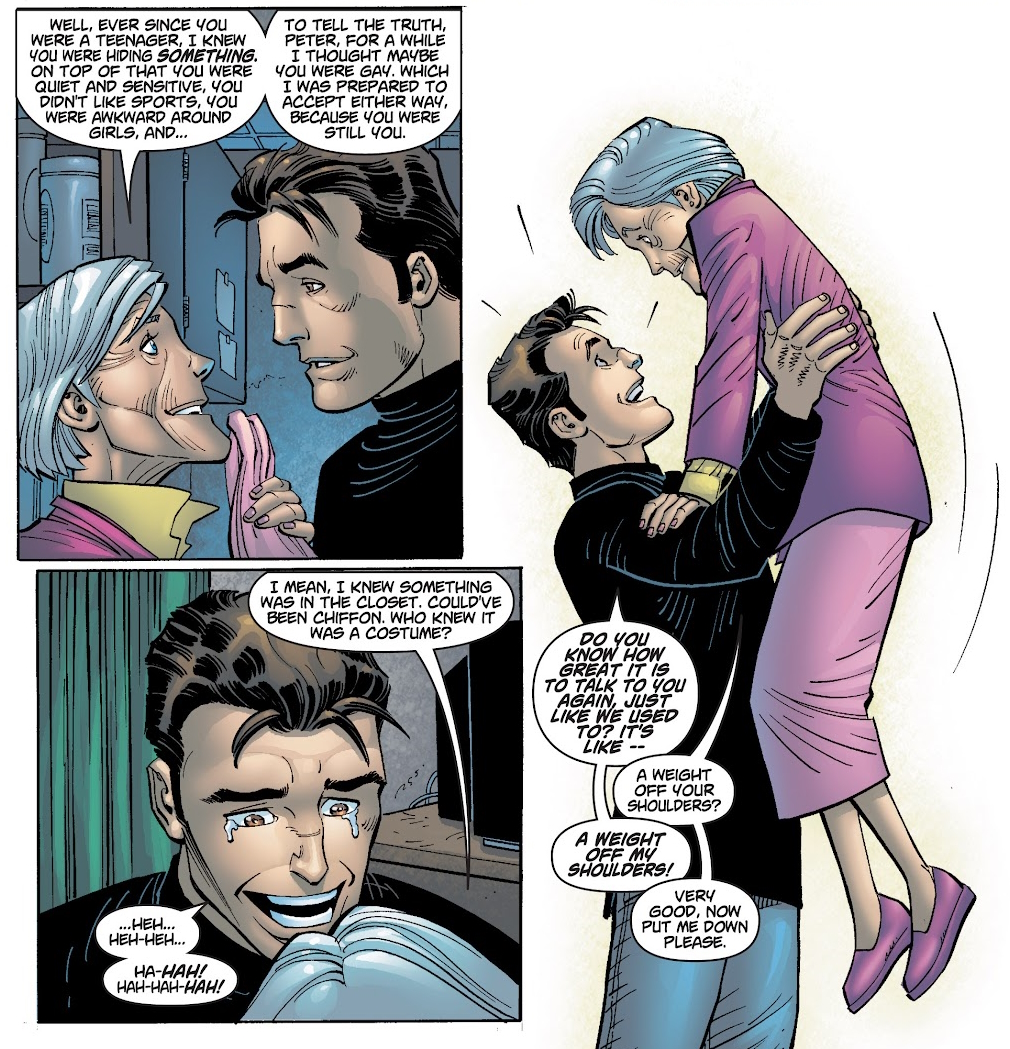Ever since the release of Spider-Man: Across the Spider-Verse earlier this year, several background details in the movie have made fans wonder if the film’s version of Gwen Stacy is meant to be transgender. However, is this an explicit creative decision by the filmmakers, or a cannon-supported fan theory? Here’s whether we think Gwen is trans in Spider-Man: Across the Spider-Verse.
Is Spider-Verse’s Gwen Stacy the First Transgender Spider-Woman?
The short version is that Gwen doesn’t explicitly say she’s trans, but there’s a lot of evidence for the interpretation.
Early in Across the Spider-Verse, in the scene set on Gwen’s Earth, there’s a quick shot at the start where there’s a trans pride flag on the arm of Captain Stacy’s uniform. Later, after Gwen’s argument with her father, there’s a quick shot where you can see another trans pride flag tacked on her bedroom wall (circled below), above her door, with “Protect Trans Kids” written on it.
Related: Never Mind Across the Spider-Verse: Miles Morales’ Secret Nightmare Has Already Happened

Image by Sony/Columbia
Further, Spider-Man: Across the Spider-Verse frequently bathes Gwen in the same pinks, blues, and whites as the transgender flag. In a movie that’s so specifically concerned with color, which frequently shifts its art style or palette to underscore the action or drama, there’s no way this wasn’t done with purposeful intent.
That being said, a lot of Marvel Comics’ characters are built on the concept of the superhero as allegory. The X-Men are the most famous example, which famously uses its mutant characters as a sci-fi stand-in for various cultural minorities. One of the reasons why the X-Men got popular in the first place was how easy it was for any and all readers to see themselves reflected in the characters.
That’s not as common a plot arc for Spider-Man stories, but it’s also not unheard of. A lot of writers from outside the comic have pointed out the thematic similarities between a superhero who’s forced to keep a secret identity and a deeply closeted queer kid.
Marvel itself has occasionally made that parallel. A decent example comes from 2002’s Amazing Spider-Man Volume 2 #38, by J. Michael Straczynski and John Romita Jr., where May Parker has just discovered Peter is Spider-Man:

Image by Marvel Comics
It can be an effective allegory, although it’s obviously not going to be universally applicable. The benefit is that you can often make a point more effectively with an allegory than you could with a straightforward explanation.
That parallel is visibly at work in a lot of the personal conflict in Across the Spider-Verse, particularly between Gwen and her father. She’s got a secret that she can’t bear to tell him, for fear that her father will reject her outright. Granted, the secret is that he doesn’t know he’s been trying to arrest Gwen for a murder she didn’t commit, but for the purposes of the comparison, a secret is a secret.
Gwen may or may not be transgender in Spider-Man: Across the Spider-Verse (and one way or the other, that’s what your head canon is for), but as a superhero with a secret identity that she’s desperate to keep, she’s a useful sort of character for examining queer issues.
If you’re looking for more explanations of Marvel lore, check out just how many versions of Spider-Man there actually are.
